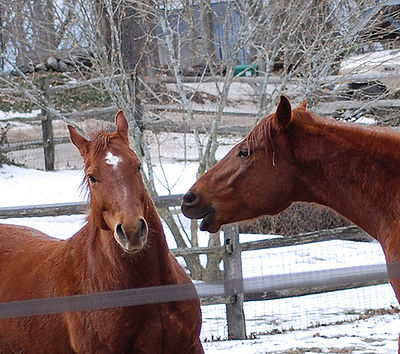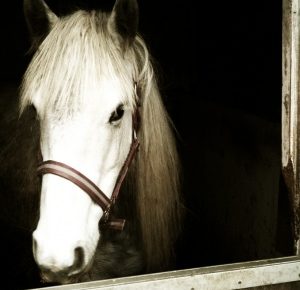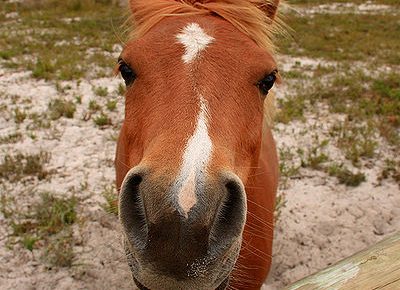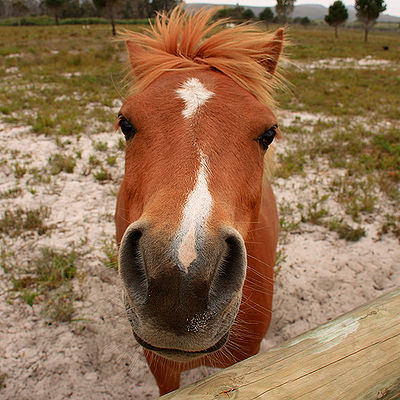
Observation is the key to learning your horse’s silent language, better known as body language.
A horse, unlike a dog who is a predator, is a prey animal. They live in herds where one horse is the leader and takes responsibility for the herd.
The dominant horse will decide whether the herd is in danger and should run away. If the leader chooses to eat where one of the herd is grazing, s/he will use body language to tell the other horse to move – lifting the head high with ears back. If the herdmate doesn’t move, s/he can be on the receiving end of a nip as a reminder of who is boss.
As prey animals, horses will flee instead of fight. A horse will only be defensive when cornered without an escape route.
To avoid behavior problems, you must be the leader. Claim your space and push your horse of s/he doesn’t move out of your space or rubs its face on you. Don’t allow your horse to chew your clothing or nibble on you. Bumping into you is a sign of disrespect and by pushing your horse away, you are claiming leadership.
Never use punishment or cruel methods to teach your horse that you are the leader.
Horses are very sensitive to our emotions and our body language. A horse understands even our subtle movements and facial expressions very well.
Some points of horse body language to look for:
- A gently swishing or hanging tail denotes a relaxed, calm attitude.
- A rapidly swishing tail means irritation or annoyance.
- A tail held tightly to the body shows fear and nervousness.
- A tail held high is a sign of happiness and spirit.
Watch your horse’s facial expressions. S/he uses eyes, ears and mouth to let you know what s/he is feeling.
Studying all your horse’s movements and signs will help you understand his/her body language. Think about your own body language and what you are presenting to your horse. Then you will be the leader.
Related articles:



